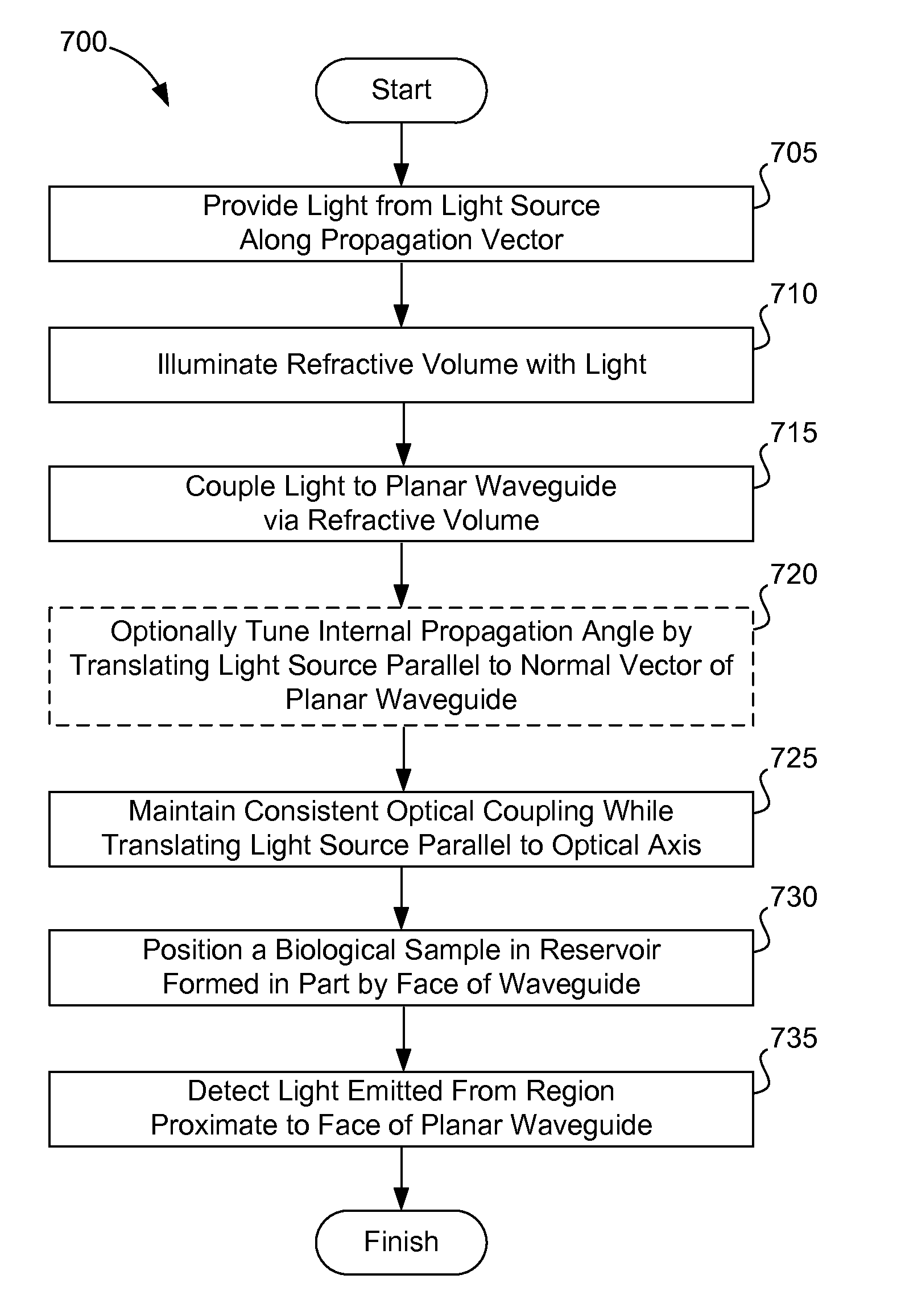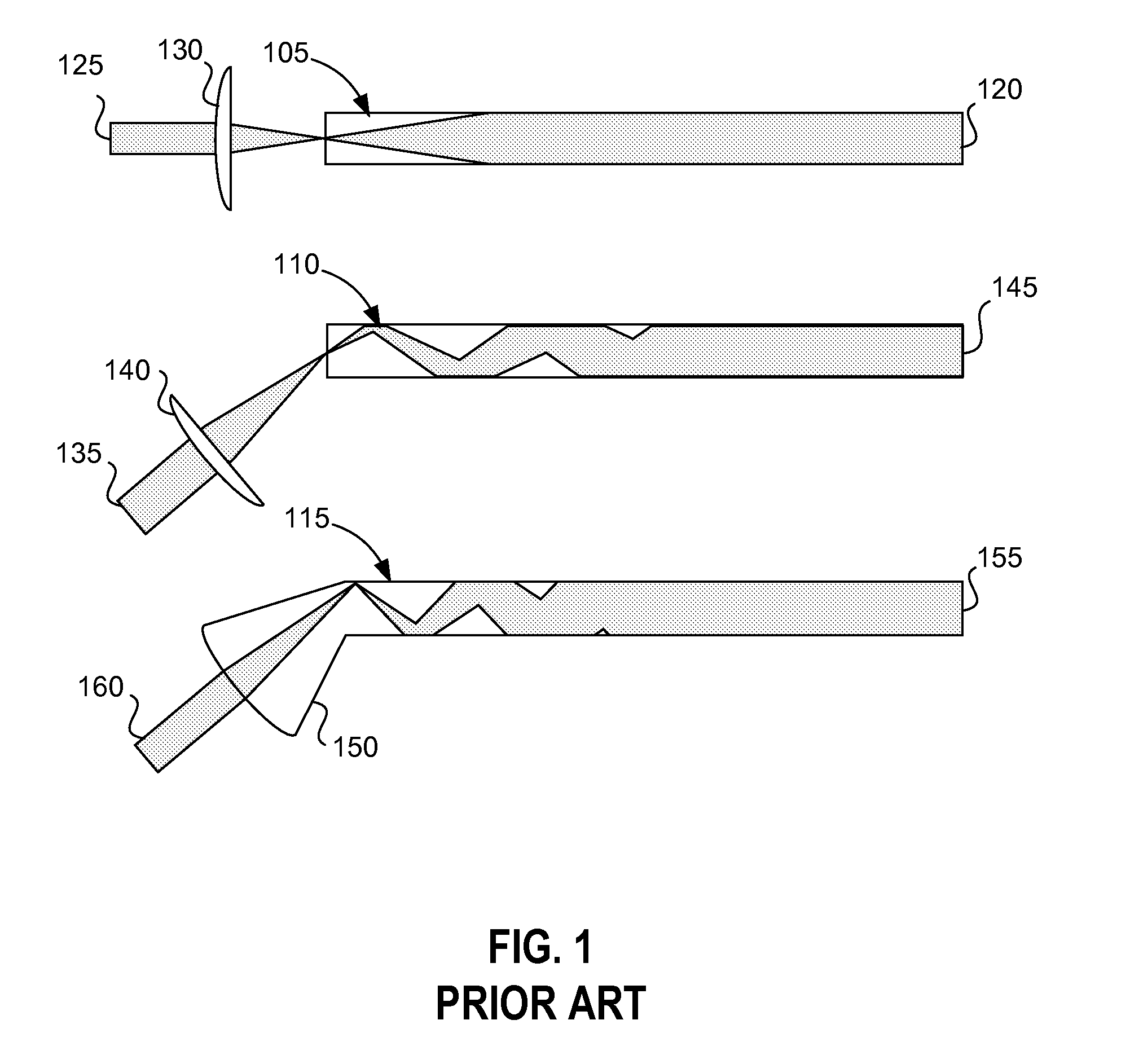Planar optical waveguide with core of low-index-of-refraction interrogation medium
a technology of low-index of refraction and interrogation medium, which is applied in the direction of optical radiation measurement, luminescent dosimeters, instruments, etc., can solve the problems of reducing the evanescent field strength down the length of the waveguide, spatially varying field strength, and single-mode planar waveguides are expensive to manufacture, so as to reduce the inadvertent misalignment of users and reduce the cost of manufacturing. , the effect o
- Summary
- Abstract
- Description
- Claims
- Application Information
AI Technical Summary
Benefits of technology
Problems solved by technology
Method used
Image
Examples
example i
Detection of Fluorescently Labeled Human Blood Cells
[0091]Human peripheral blood mononucleocytes (“PBMCs”) are labeled with CD3 Alexa Fluor 647 fluorescence stain, available from Invitrogen Corporation. The cells, whose diameter is 6-12 μm, are kept in a buffer consisting of phosphate buffered saline with 1% Bovine Serum Albumin and 0.06% sodium azide. The buffer with cells is loaded into a cartridge of the type shown in FIGS. 27 and 28. The substrate materials and the buffer lead to a critical angle at the substrate-to-interrogation medium interface of θc=61°. 635 nm laser light is coupled into the system through the curved part of the lower substrate. The curvature is designed such that different entry heights result in different angles of incidence onto the substrate-to-interrogation medium interface. Two different laser heights were used in the present example resulting in two different angles of incidence onto the substrate-to-interrogation medium interface: (a) 57° and (b) 66°...
PUM
 Login to View More
Login to View More Abstract
Description
Claims
Application Information
 Login to View More
Login to View More - R&D
- Intellectual Property
- Life Sciences
- Materials
- Tech Scout
- Unparalleled Data Quality
- Higher Quality Content
- 60% Fewer Hallucinations
Browse by: Latest US Patents, China's latest patents, Technical Efficacy Thesaurus, Application Domain, Technology Topic, Popular Technical Reports.
© 2025 PatSnap. All rights reserved.Legal|Privacy policy|Modern Slavery Act Transparency Statement|Sitemap|About US| Contact US: help@patsnap.com



